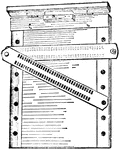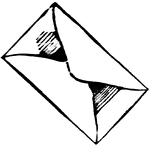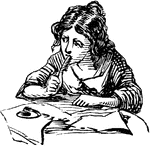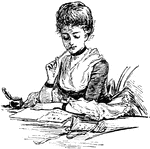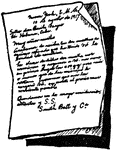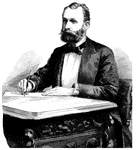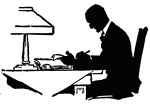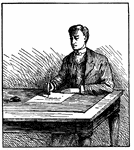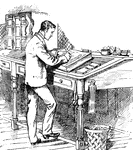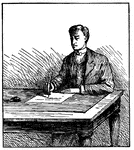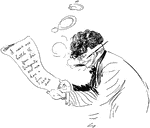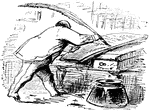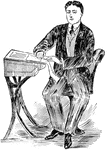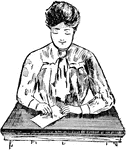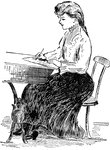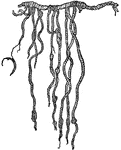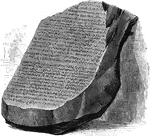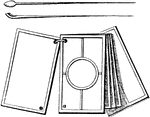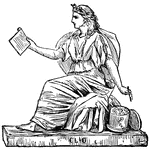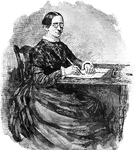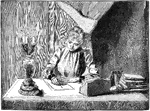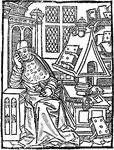Writing
The Writing ClipArt gallery offers 58 illustrations of people writing and historic examples of written communication.

Beginning of Written Language
"Below the pictured hieroglyphics in the first line is the same text in a simpler writing known as hieratic.…
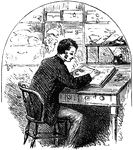
Man Sitting at Desk & Writing in Journal
An illustration of a man sitting at a desk and writing in a journal.
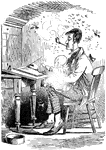
Man Writing Letter with Child
An illustration of a man smoking a pipe and writing a letter while holding an infant.

Saint Matthew Writing
Saint Matthew sitting an a cloth-covered table writing the Gospel. The Holy Spirit, represented as a…
Early Egyptian Pictures
"Early Egyptian Pictures. Ploughing, breaking clods, and sowing."—Gordy, 1912
Pen Practice Strokes
"These strokes are the elements of which the single stroke letters are composed." —French, 1911
Basis of Reinhardt Letter
"The lower case or small letters of this style are drawn with bodies two-thirds the height of the capitals.…
Rosetta Stone
"In 1799, the Rosetta Stone was found and gave the first key to the reading of hieroglyphics. On this…
Excerpt from the Rosetta Stone
"In 1799, the Rosetta Stone was found and gave the first key to the reading of hieroglyphics. On this…

Rosetta Stone Sample
"In 1799, the Rosetta Stone was found and gave the first key to the reading of hieroglyphics. On this…
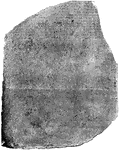
The Rosetta Stone, Front View
A fragment of an Ancient Egyptian text, which provided the key to the modern understanding of Egyptian…

Portion of Rosetta Stone
"In the Nile valley there had been found a few ancient inscriptions, carved upon stone in unknown characters,…
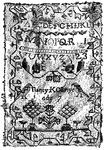
American Sampler
A piece of embroidery or needlework produced as a demonstration or test of skill. This sampler includes…
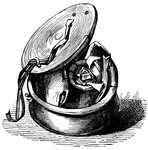
Skippet - Open Box with a Seal Inside
"A circular box used for covering and protecting a seal. Old documents were commonly sealed by means…
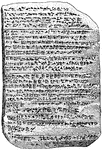
The Amarna Tablet
A series of correspondence on clay tablets between the Egyptian administration and its representatives…
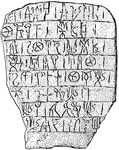
Cretan Writing
"A large tablet with linear script found in the palace at Gnossus, Crete. There are eight lines of writing…
Examples of Picture Writing
"1, 'war' (Dakota Indian); 2, 'morning' (Ojibwa Indian); 3, 'nothing' (Ojibwa Indian); 4 and 5, 'to…
Indian Picture Writing
"Picture writing of the Tahltan, a British Columbia tribe. The drawing was done in charcoal on the blazed…
